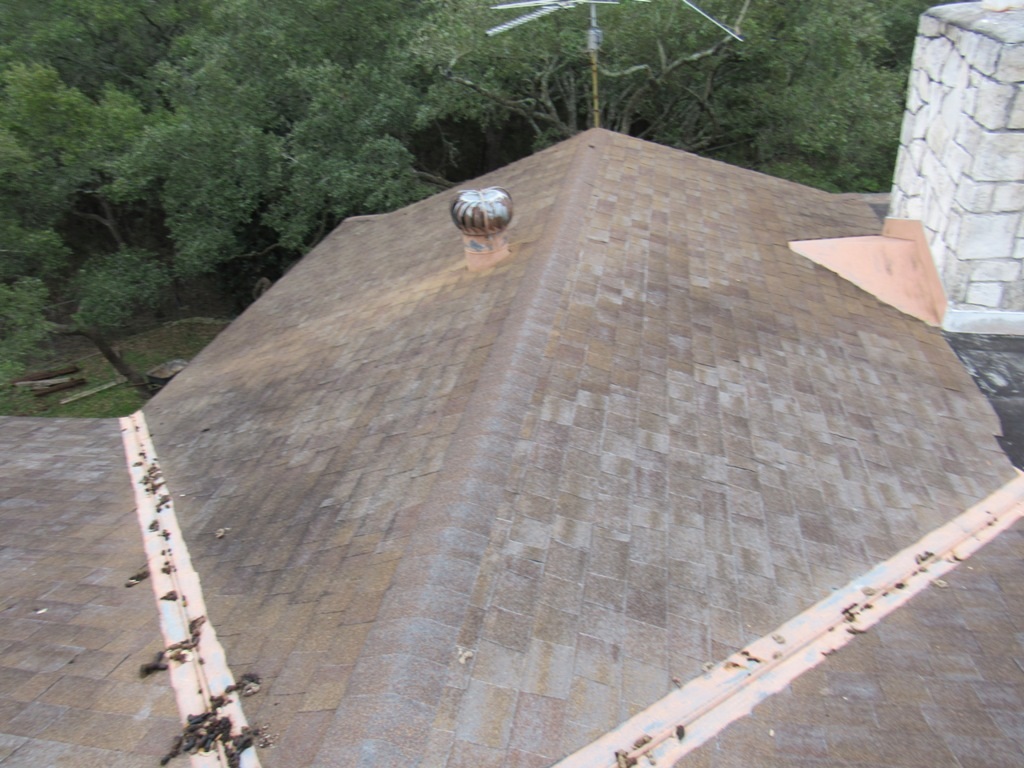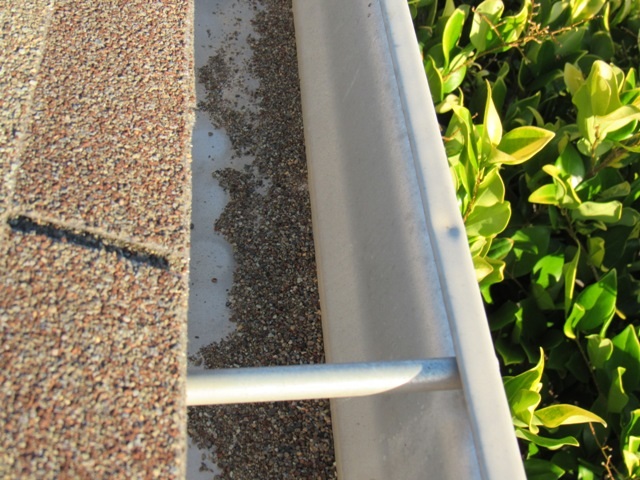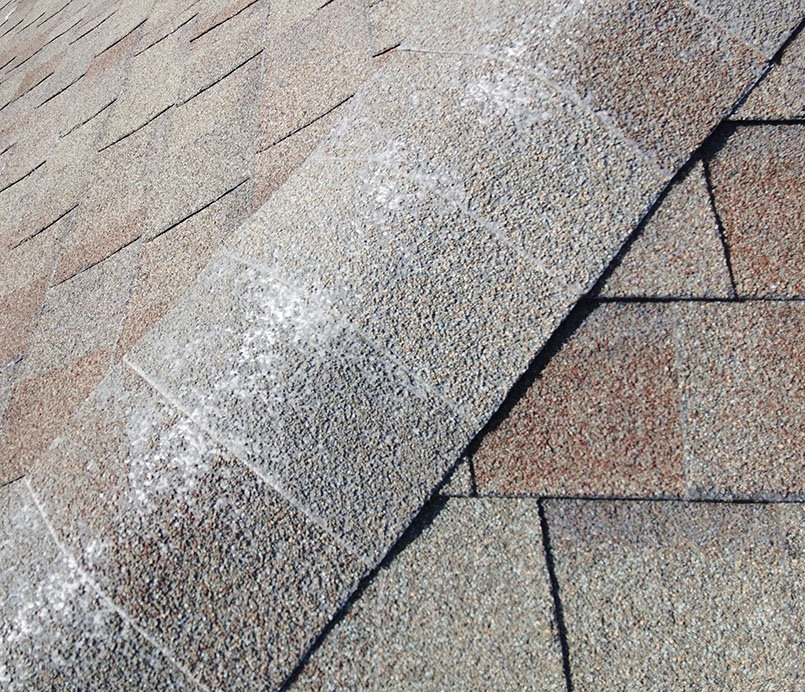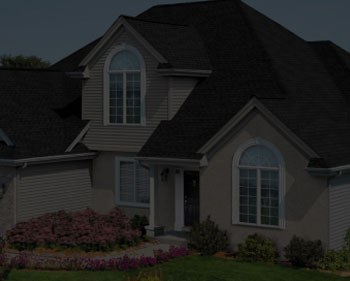


Roof granules, which are made of crushed stone or minerals and a ceramic coating, add color and texture to your asphalt shingle roof. The granules contribute to the stability and function of your roof and are essential components to protecting your home or commercial property from the elements. Granules enable roof shingles to shed water by causing the water to slide off the shingles and flow down the roof. Granule loss will make water more likely to sit on the roof and eventually soak through.
Granules also ensure your roof is protected from UV rays, and some granules are even coated in specialized material to reflect sunlight. Sun exposure during the hot Texas summer can cause your roof to deteriorate. You can think of granules as sunscreen for your home. It’s important to watch for signs of deterioration in your shingles and take action to maintain your shingle roof. Preventing further damage to your roof not only maintain aesthetics but will save you money and time on roof repairs and replacements.
Shingle granules also help the resistance to algae growth. Black streaking on roofs is usually caused by algae growth on shingles. Some granules are designed to resist algae growth by adding copper to the granules. Granule loss effectively ends your roof’s protection from streaking. Although the algae itself isn’t harmful, it retains moisture which can lead to shingle damage and rot.
Granules also perform important functions for construction. Granules keep the shingles from sticking together during packing, distribution, and installation. Shingle granules also provide traction on the roof for roof contractors and anyone else who must access the roof for maintenance and repairs.


Some granule loss is inevitable. Granule loss over the life of the roof is normal since your roof is continually exposed to the elements. Granule loss is usually uniform across the roof and is usually a result of normal weathering. Over time, the bond between the granules and the asphalt deteriorates. When this happens, the granules are loosened and carried away by water runoff.
Power Washing – If needed, washing your roof is fine, but the force of water during power washing is far greater than normal water flow and will loosen granules. The dislodged granules will then be washed away by the force of the water. If there’s algae present on the roof, power washing is not recommended. If your roof has so much black streaking that you feel it needs power washing, it may already have granule loss damage that needs to be addressed.
Limbs and Wind-Blown Debris – While trees near your home provide excellent shade, limbs that rub against the roof can scrape off granules and decrease the effectiveness of your shingles. Debris that lands on your roof from nearby trees may also can granule loss to your shingles. For this reason, it’s important to properly trim and maintain trees that are near your roofline.
Debris from Gutters – It is especially important for asphalt shingle roofs to keep gutters clean and free of debris. Debris from gutters can wash up onto the roof, sanding away granules and washing them into the gutter.
Foot Traffic – It’s important to minimize foot traffic on your asphalt shingle roof. There are times when you, home maintenance professionals, or your roofing contractor need to walk or climb on your roof, such as during a roof inspection after a hailstorm. It’s best to have roofing professionals walk on your roof to look for hail damage as mechanical damage can occur to your shingles due to incorrect technique while walking on asphalt shingles. When your asphalt shingle roof has been walked on, look for signs of granule loss that may occur. It’s better to repair a few shingles than to have minimal granule loss lead to more serious roof damage.
Hail and Storm Damage – The most common source of roof damage is due to storm damage. Heavy winds, prolonged exposure to hail, or extreme weather can cause granule loss that leads to shingle damage. It’s imperative that you have your roof inspected for hail damage, even if you have a newer roof. Even new asphalt shingles can be damaged by a big storm.


After your new roofing system is installed, you may notice loose granules in your gutters or in your yard and it’s usually not a cause for concern. A new roof is typically coated with excess granules, which will shed during installation and the first few storms.
Minor granule loss over the normal life of your roof is normal as your roof is exposed to the elements. If you notice bald spots on your roof, or large amounts of granule loss from specific areas of the roof, the shingles may have a manufacturer defect. In this case, contact your roofing contractor to install replacement shingles from your manufacturer.

Black Streaks - Large amounts of algae growth on your roof could be a sign of excessive granule loss.
After a Hailstorm – Hail impacts your roof with force and is often accompanied by strong wind and rain, making it the leading cause of granule loss. Hail damage can be difficult to identify from the ground. A professional roof inspection can let you know if you should file an insurance claim for a roof replacement or give you the peace of mind in knowing that your roof weathered the storm.
Loose Shingles – A storm won’t always damage your entire roof. High winds can catch shingles and pull them loose. Loose shingles make it possible for water intrusion that can damage your roof decking and the attic beneath it.
Bald Spots – Visible bald spots on an asphalt shingle roof are the kind of damage that presents on older roofs and is an urgent situation. Often an older roof with that amount of granule loss needs a roof replacement to continue to protect the home.
Increased Granule Loss – If you notice more granules in your gutters or on the ground than you have before, your roof may be starting to deteriorate. You may not need a roof replacement, but Orbit Roofing, your local roofing contractor can advise you as to how much time your life has left, quote any repairs, or give you an estimate for the cost of a roof replacement.
Be sure to call Orbit Roofing at 844.211.7744 if you are experiencing any signs of granule loss. Our roofing professionals will determine the most likely cause of your shingle granule loss so that you can make an informed decision and make sure that your home has maximum protection from the elements.




